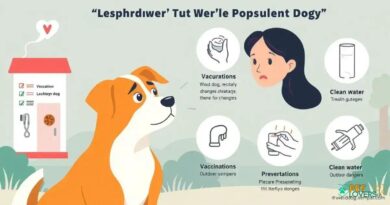What is: Yapping control methods
Understanding Yapping in Dogs
Yapping is a common behavior exhibited by many dog breeds, often characterized by high-pitched barking. This vocalization can stem from various reasons, including excitement, anxiety, or the need for attention. Understanding the underlying causes of yapping is crucial for implementing effective control methods. By recognizing why your dog yaps, you can tailor your approach to address the specific triggers that lead to this behavior.
Amazing Deals on Dog Products!
Shop now for incredible deals on dog products at Amazon.com.
LEARN MORE
Identifying Triggers for Yapping
To effectively control yapping, it is essential to identify the triggers that cause your dog to bark excessively. Common triggers include the presence of strangers, other animals, or even boredom. Observing your dog’s behavior in different situations can help you pinpoint these triggers. Once you understand what prompts your dog to yap, you can begin to implement strategies to mitigate these responses.
Positive Reinforcement Techniques
One of the most effective yapping control methods involves positive reinforcement. This technique encourages desired behaviors by rewarding your dog when it remains quiet in situations that typically provoke yapping. Using treats, praise, or playtime as rewards can help reinforce calm behavior. Over time, your dog will learn that being quiet leads to positive outcomes, reducing the frequency of yapping.
Training Commands to Curb Yapping
Teaching your dog specific commands can also be an effective way to control yapping. Commands such as “quiet” or “enough” can be introduced during training sessions. Consistency is key; use these commands whenever your dog begins to yap, and reward them for responding appropriately. This method not only helps in controlling yapping but also strengthens the bond between you and your dog through effective communication.
Environmental Management Strategies
Managing your dog’s environment can significantly reduce yapping incidents. This may involve creating a calm space for your dog, using barriers to limit their view of potential triggers, or providing engaging toys to alleviate boredom. By minimizing exposure to stimuli that provoke yapping, you can create a more peaceful environment for both you and your pet.
Desensitization Techniques
Desensitization is a gradual process that can help your dog become less reactive to their triggers. This involves exposing your dog to the trigger at a distance where they feel comfortable and gradually decreasing that distance over time. Pairing this exposure with positive reinforcement can help your dog associate the trigger with positive experiences, ultimately reducing their yapping response.
Professional Training Assistance
If yapping persists despite your efforts, seeking professional help may be beneficial. Certified dog trainers or behaviorists can provide tailored strategies and insights based on your dog’s specific needs. They can also assist in identifying any underlying behavioral issues that may contribute to excessive yapping, ensuring a comprehensive approach to training.
Using Anti-Bark Collars
In some cases, anti-bark collars can be a useful tool for controlling yapping. These collars deliver a mild correction when the dog barks, discouraging the behavior. However, it is essential to use these devices responsibly and as a last resort, as they may not address the root cause of yapping. Always consult with a professional before implementing such methods to ensure they are appropriate for your dog.
Maintaining Consistency in Training
Consistency is vital in any training regimen, especially when addressing yapping. All family members should be on the same page regarding commands and training techniques. Inconsistent responses can confuse your dog and hinder progress. By maintaining a unified approach, you can create a clear understanding for your dog, making it easier for them to learn and adapt.
Monitoring Progress and Adjusting Techniques
Finally, it is important to monitor your dog’s progress and be willing to adjust your techniques as needed. Every dog is unique, and what works for one may not work for another. Regularly assessing your dog’s behavior and the effectiveness of your chosen methods will help you refine your approach, ensuring the best possible outcome for controlling yapping.



